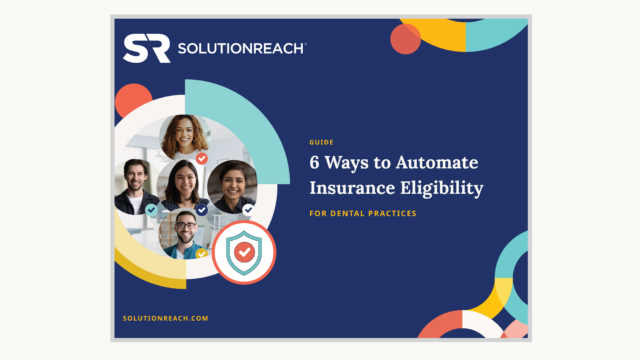In today’s healthcare landscape, reducing inefficiencies and wasted time in front-office workflows is crucial for preventingcutting down on inefficiencies and wasted time in your front-office workflows is crucial for stopping revenue loss and front-office burnout. One major roadblock that dental, vision, and medical practices often face is the slow, manual process of sharing treatment plans and other essential documents with patients.
These inefficient healthcare workflows aren’t just frustrating—they’re costly. They lead to fewer booked appointments, lower treatment acceptance rates, and a hit to your cash flow. While the healthcare industry aims for a 90% case acceptance rate, studies show that many dentists fall short by as much as 30%.
In this article, we’ll explore the current practices for sharing private documents with patients, identify common pain points, and discuss how the right tools can help you overcome these challenges. By streamlining your document workflow, you can schedule more appointments, simplify treatment presentations, and boost your treatment approval rate.
How do healthcare organizations typically share private documents with patients?
Because these documents often contain personal health information (PHI), practices must handle them with care. Treatment plans, prescriptions, and waivers are just a few examples. Most practices rely on hard-copy documents and a manual process for sharing and gathering signatures, often using patient portals to provide access.
However, this approach has its drawbacks:
- It’s slow and labor-intensive, resulting in lower treatment acceptance rates.
- Patients often find it confusing and frustrating.
- It limits your practice’s ability to scale and book more appointments, ultimately hurting your cash flow.
What are healthcare professionals’ biggest pain points in the patient document and treatment presentation process?
1. Document security
Practices need to ensure they don’t send documents containing PHI and other private Ensuring PHI is shared securely is paramount. Sending documents via insecure channels, like SMS or paper printouts, can compromise patient privacy and HIPAA compliance.
2. Signature gathering
To minimize risks to patient privacy and personal data security, practices must gather signatures manually or not at all. That’s because patients are unable to sign treatment plans or other documents digitally in a secure manner. That slows down the process and makes it less likely that patients will approve recommended treatments.
3. Patient portals
To boost treatment acceptance rates, many practices will make private documents available to patients behind the security of their patient portal. However, patient portals have low adoption because patients find them and their password logins cumbersome and inconvenient. The result is fewer patients consenting to receive your treatments.
How can a software tool overcome the obstacles of ensuring security and privacy when sharing patient documents?
Fortunately, there’s a better way. A comprehensive secure documents solution can help you quickly and securely share documents with patients, enabling them to make informed decisions about their care. This tool allows you to send treatment plans, prescriptions, and waivers securely, and even collect e-signatures.
8 Must-Have Features in a Secure Documents Solution:
1. Treatment plan information: Share treatment details, costs, and expected insurance reimbursements.
2. Statement sharing: Improve payment collection by securely sharing statements for patient review.
3. Prescription sharing: Comply with regulations like the Eyeglass Rule by easily sharing prescriptions.
4. Secure document links: Send patients SMS links to a secure document center where they can access all their documents.
5. HIPAA-compliant document center: Provide patients with secure, two-way authenticated access to their documents and patient information.
6. Digital signature collection: Collect e-signatures before, during, or after appointments.
7. Document management: Utilize automation to automatically store and organize signed documents in a secure center.
8. Notification alerts: Get instant notifications when patients take action on any document for quick and efficient follow-up.
What are the benefits to healthcare providers of a secure documents solution?
An all-in-one secure documents tool can transform your manual document-sharing process, leading to higher treatment acceptance rates, more appointments, and increased revenue. Key benefits include:
1. Simplified patient document access—no more confusing logins.
2. More booked treatments by streamlining communication and e-signatures via automated messaging.
3. Time savings by eliminating manual tasks like scanning and emailing documents that can also introduce human error.
4. Efficiency gains by consolidating secure documents and patient care communication tools in a single platform.
Key Takeaways
It’s time to break free from the bottlenecks in your patient document workflow management. With an all-in-one secure documents solution, you can boost productivity, enhance the patient experience, improve your overall clinical workflow processes, and drive revenue. Streamline your process, improve treatment acceptance rates, and start retaining more of your hard-earned revenue.




